We specialize in
YOU
About The Rehabilitation Hospital
In the heart of Al Ahsa’s oasis, our cutting-edge health facility spans over 100,000 square meters, as we journey towards achieving LEED Platinum certification. In partnership with the global architectural firm, HDR, we have sculpted a sanctuary that seamlessly merges modern architecture with the finest medical care
Our facility resembles a micro village that embraces the surrounding landscape. Embodying the essence of the oasis-like landform, while the building design fosters a deep connection with nature, enhancing the healing process for our patients.
As the northern gateway to Al-Ahsa, our hospital stands tall as an iconic landmark, leaving a lasting impression on all who encounter it. With a capacity of 300 beds, each thoughtfully designed as single rooms, we prioritize patient comfort, experience, and privacy.
Fast Facts:
- Spans over 100,000 square meters
- 300 beds
- 7 specialized centers
- Achieving LEED Platinum certification


The Inpatient Rehabilitation program combines world-class medical care with a healing oasis ambience.
Our interdisciplinary team guides you to reach your maximum functional level with a dynamic approach to your recovery.
The Inpatient Rehabilitation program offers you a variety of therapies and treatments to help you recover from acute, relapse, or chronic onsets.

At our facility, we believe in unlocking the full potential of each individual, restoring independence, and enabling a life of wellness. With our multi-level approach to care, we stand ready to accompany you on your path to recovery, providing unparalleled support and resources at every stage.
With outpatient care, your recovery journey remains uninterrupted as we deliver coordinated care to support your ongoing progress. Whether you require rehabilitation medicine, physical therapy, occupational therapy, respiratory therapy, dietitian services, psychology, or speech therapy, our team will ensure that you receive the highest level of care tailored to your evolving needs.
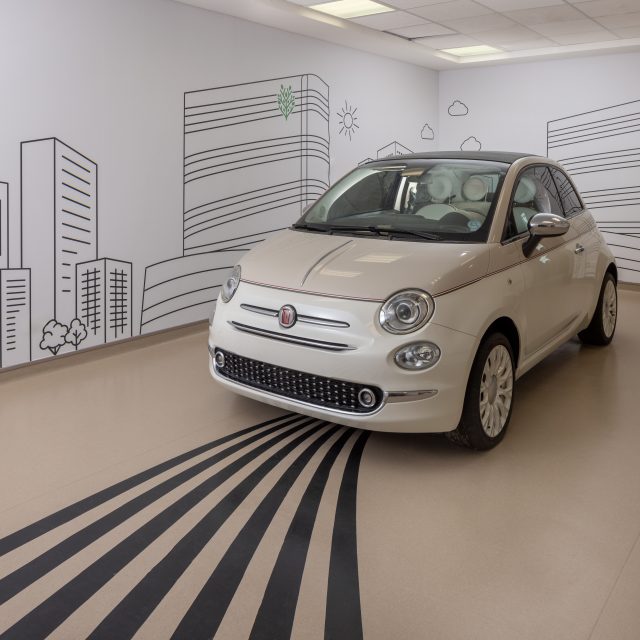
The Long-term Care Unit at Almoosa Rehabilitation Hospital is a synonym for holistic care where we redefine comfort, care, and community belonging. Our unit is where time slows down, and compassion knows no bounds.
Our dedicated team is your extended caregiver, providing personalized, continuous care in a warm, home-like atmosphere. From engaging therapeutical activities, indoors and outdoors in our therapeutical garden to advanced medical support, we touch every aspect of your well-being.
At our Long-Term Care Unit, life isn’t just about existing; it’s about thriving. Discover a new chapter of care, companionship, and comfort with us.

Almoosa Rehabilitation Hospital’s Mental Health Inpatient Program is designed to provide comprehensive care and support to patients experiencing mental health distree. The program offers a healing environment where patients receive round-the-clock care from a multidisciplinary team of mental health professionals.
The program focuses on various treatment modalities, including individual therapy, group therapy, family therapy, and medication management. Individual therapy sessions allow patients to explore their concerns, set goals, and develop coping strategies tailored to their specific needs.
Family therapy is also available to involve loved ones in the treatment process. This approach helps develop effective communication, resolve conflicts, and foster a supportive environment for patients during their recovery journey.
Services:
- Computerized Motion Analysis.
- Electrodiagnostic Testing.
- Cognitive Rehabilitation.
- Aquatic Therapy.
- Proprioceptive Therapy & Training.
- Balance Training & Exercises.
- Activities of Daily Living (ADL) Training.
- Expressive Arts Therapy.
- Functional Rehabilitation & Training.
- Pelvic Floor disorder Rehabilitation.
- Sensory Integration.


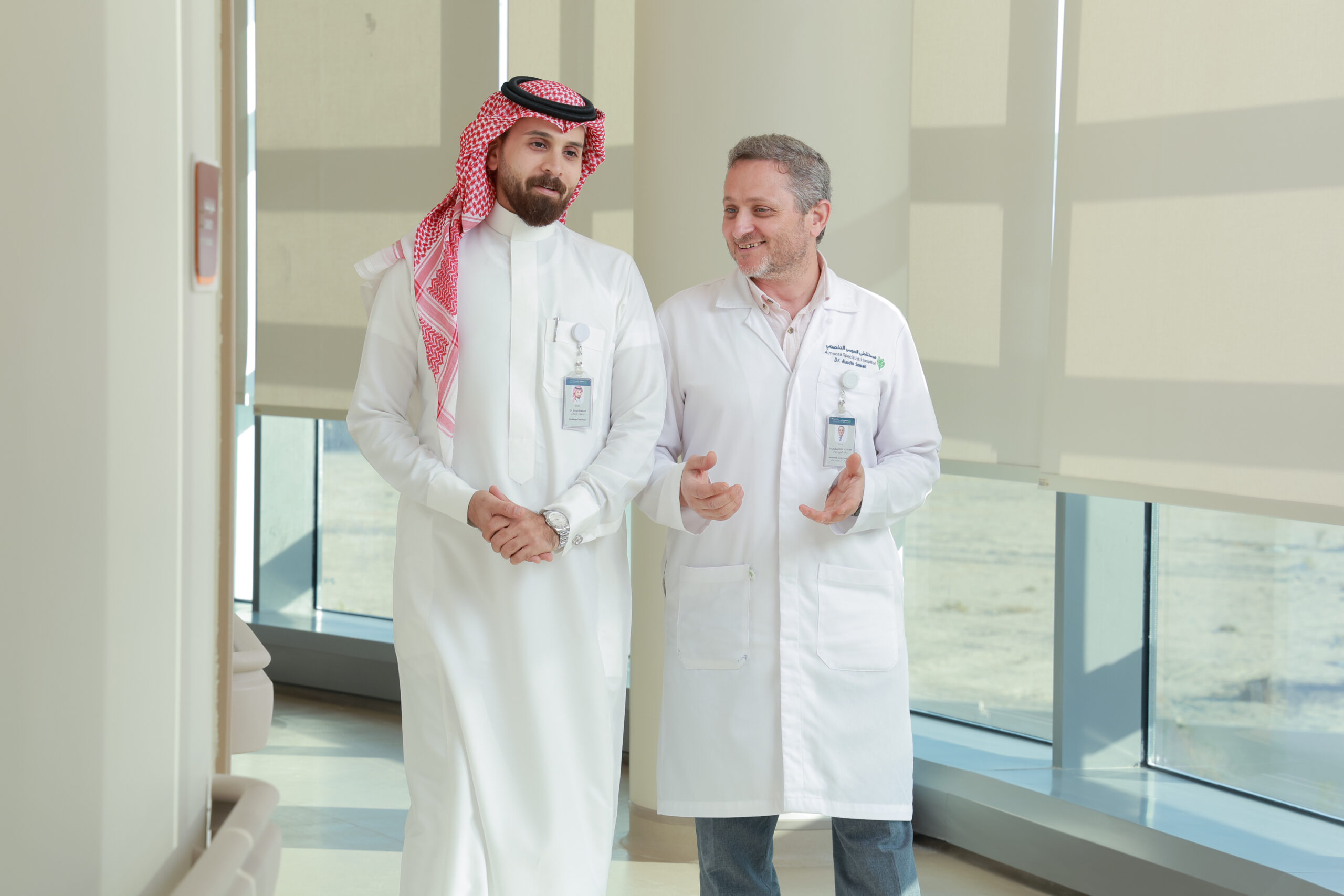

Neurology and Stroke Rehabilitation
As leading experts in our field, we remind you just how crucial a swift start is in maximizing the potential to heal and regain functionality. No matter the nature or severity of the stroke, our early and intense therapies have proven highly effective in improving patients’ well-being. Trust AlMoosa Rehabilitation Hospital to be your partner in care, research, and progress on the path to overcoming life’s obstacles.

Spinal Cord Injury Rehabilitation
Spinal cord injury rehabilitation aims to restore function, mobility, and independence for individuals affected by this disabling condition. It typically involves a multidisciplinary approach that includes physical and occupational therapy, along with medical management. Rehabilitation interventions focus on strengthening weakened muscles, improving range of motion, and enhancing balance and coordination. Mobility aids and adaptive equipment may be utilized to facilitate daily activities. Additionally, spinal cord injury rehabilitation often incorporates psychological support, counseling, and education to address emotional well-being and promote adjustment to the new circumstances. The overall goal is to empower individuals to regain maximal independence and improve their quality of life.

Adaptive Sport Rehabilitation
Pioneers in Adaptive Sport Rehabilitation
At Almoosa Rehabilitation Hospital, we take pride in offering the best treatment and rehabilitation services for sports injuries, whether for professional or amateur athletes. Injuries sustained during sports activities can stem from various factors, including flawed movement patterns, inadequate training methods, insufficient warm-up routines, fatigue, overuse of specific muscle groups, dehydration, or the use of unsuitable equipment. Our skilled team of orthopedic specialists, sports medicine experts, and sports physiotherapists utilizes tailored treatment protocols and interventions at different stages of injury to promote optimal functional, occupational, and athletic recovery.
Sports Injury Rehabilitation Services at Almoosa Rehabilitation Hospital :
At Almoosa Rehabilitation Hospital, we provide a comprehensive range of specialized services for the rehabilitation of sports injuries. Our goal is to assist athletes, both professional and amateur, in recovering and returning to their physical activities safely and efficiently. Our services include:
- Specialized Medical Team for Sports Injuries We are proud to have a dedicated team that includes Sport physician specialist , orthopedic specialists in sports injuries, Physical Medicine and Rehabilitation specialist, along with sport physiotherapist , physical trainer and aqua therapist . This team works harmoniously to diagnose injuries and create personalized treatment plans for each patient, ensuring they receive the best medical care.
- Personalized Rehabilitation Programs Every sports injury requires a tailored approach to treatment. Therefore, we offer customized rehabilitation programs for each patient based on the type of injury and individual needs. These programs focus on restoring movement, strengthening muscles, and improving balance and flexibility to ensure comprehensive and rapid recovery.
- Neuromuscular Rehabilitation Following an injury, rehabilitation typically commences as soon as possible, involving neuromuscular stimulation to activate dormant muscle groups and prevent the loss (atrophy) of functional muscle mass. Our team is highly experienced in executing effective rehabilitation techniques to foster prompt recovery, ensuring patients can achieve full restoration of their physical condition for their chosen sport.
- Advanced Physical Therapy Techniques At Almoosa Rehabilitation Hospital, we employ the latest physical therapy techniques to aid in recovery from sports injuries, including:
- Laser Therapy to accelerate the healing of injured tissues.
- Ultrasound Therapy to alleviate pain and inflammation.
- Electrical Muscle Stimulation to restore muscle strength and prevent atrophy.
- Aquatic Therapy: A highly effective method for relieving stress on joints and muscles. Conducted in water, it allows for movement and strength exercises with minimal resistance and impact on the body, promoting recovery, improving circulation, and safely strengthening muscles.
- Extra Corporal choc waves: to improve soft tissue healing and remodeling
- Isokinetic system: testing and rehabilitation program
- D -Wall: force platform rehabilitation system
- Alter G: antigravity treadmill system
- Injury Prevention Programs We recognize the importance of preventing recurrent injuries, which is why we offer specialized assessment and training programs to help athletes enhance their strength and flexibility, and improve their movement techniques to avoid future injuries.
- Post-Surgical Rehabilitation In cases of injuries requiring surgical intervention, we provide post-operative rehabilitation programs specifically designed to ensure the patient gradually and safely regains health and strength, with close monitoring to achieve optimal results.
- Continuous Follow-Up for Recovery Assurance We are committed to providing ongoing follow-up services even after the rehabilitation program has concluded, ensuring that the patient continues to improve and receives necessary support should any challenges arise during the healing process.

Musculoskeletal Rehabilitation
The musculoskeletal system of our body plays a crucial role in our mobility, making it prone to injuries or disorders due to various reasons. Such injuries or disorders can cause long-term complications, and if left untreated, may even lead to disabilities.
In severe cases, surgical intervention may be required to address the issue effectively. The post-surgical period of rehabilitation is as crucial as the surgery itself, as it accelerates the healing process and reduces the risk of complications that could impede the patient’s recovery.
Our Rehabilitation care is a personalized program tailored to meet the specific needs of each patient. Our trained and qualified medical staff makes use of an advanced clinical approach, utilizing the latest techniques in rehabilitation to ensure that the patient receives round-the-clock supervision and follow-up. Through the use of a customized treatment plan, we can help patients improve their overall condition and get back to their regular activities

Pediatric Rehabilitation
At the heart of our exceptional care, we cater to young ones from their first steps through early adulthood. Our all-encompassing approach covers a wide range of ailments, from accidents to birth-related conditions and beyond, supporting young warriors on their journeys through life.
When it comes to conditions like neuromuscular disorders and developmental delays, it is crucial for an experienced multidisciplinary team to follow up with the child’s progress and development as they grow. After diagnosis, children and families can face significant challenges, as their bodies and physiologies may have changed. Our dedicated care team is committed to providing the highest quality care, treatments, follow-up, and patient/parent education to ensure the child can thrive and achieve their full potential, taking into account their individual abilities.

Pain Management
At the Pain Management Center, we specialize in treating a wide range of conditions that cause discomfort, from chronic low back pain and neck pain to arthritis pain and fibromyalgia. Our approach is unique, incorporating a variety of therapies and interventions that target both the physical and emotional aspects of pain management.
We understand that managing pain involves more than just traditional treatments, so we also offer strategies to help our patients improve their sleep, pacing, body mechanics, posture, and relaxation techniques. These methods are specifically designed to enhance function and reduce the use of medications and invasive procedures. Best of all, these interdisciplinary treatments are conveniently located in a single location for easy access. Our goal is to help our patients manage their pain effectively and achieve a better quality of life
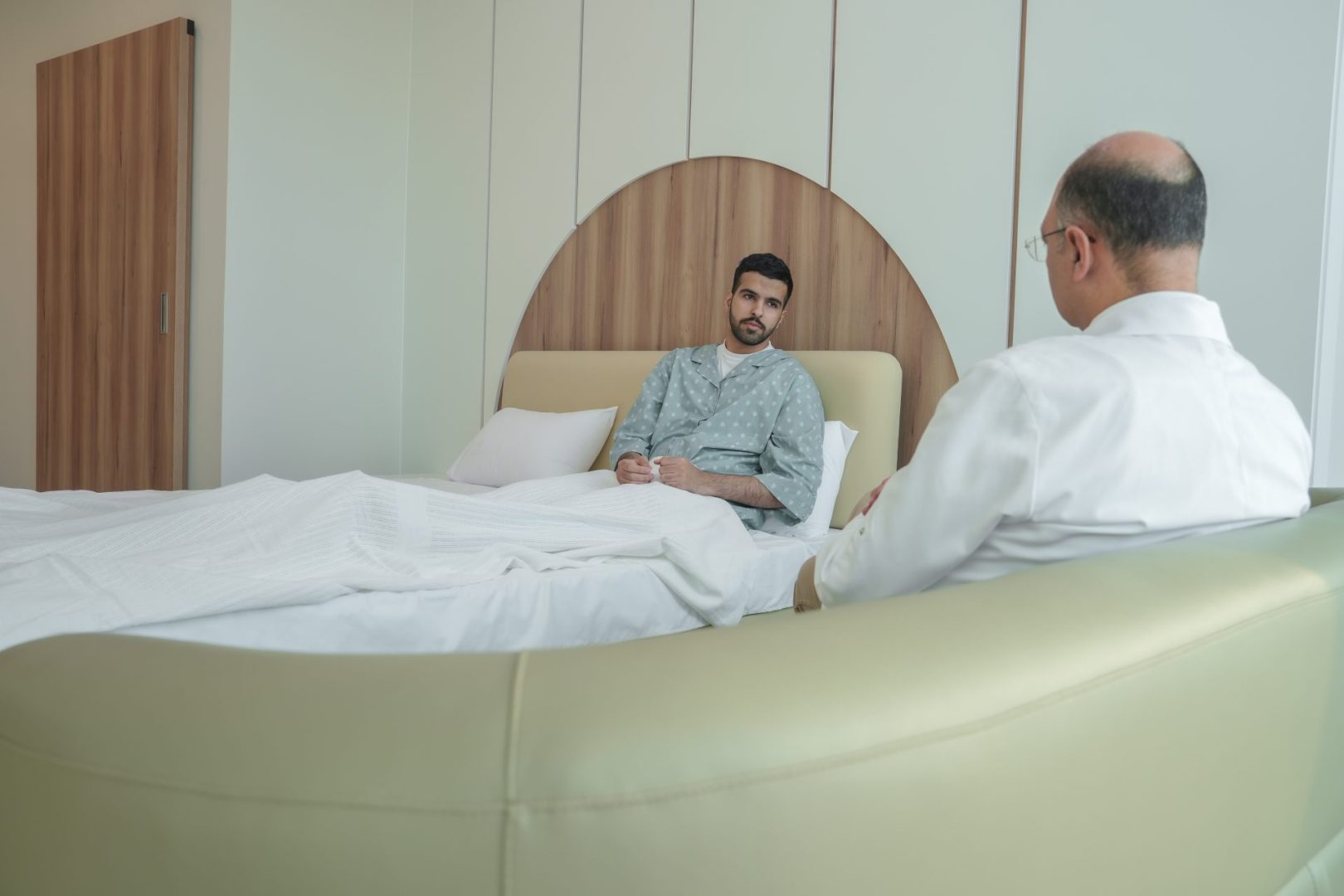
Aphasia
Aphasia is a disorder that affects how you communicate. It can impact your speech, as well as the way you write and understand both spoken and written language.
Aphasia usually happens suddenly after a stroke or a head injury. But it can also come on gradually from a slow-growing brain tumor or a disease that causes progressive, permanent damage (degenerative). The severity of aphasia depends on a number of things, including the cause and the extent of the brain damage.
Speech and language rehabilitation:
Speech and language therapy aims to improve the ability to communicate. The therapy helps by restoring as much language as possible, teaching how to make up for lost language skills and finding other methods of communicating.

Multiple Sclerosis (MS)
Physical therapy for multiple sclerosis:
Physical therapy can build muscle strength and ease some of the symptoms of MS.
Therapy. A physical or occupational therapist can teach you stretching and strengthening exercises and show you how to use devices to make it easier to perform daily tasks.
Physical therapy along with the use of a mobility aid, when necessary, can also help manage leg weakness and other gait problems often associated with MS.

Amputee Rehabilitation
At Almoosa rehabilitation hospital, we are dedicated to helping individuals on their journey to regain their mobility, independence, and confidence following limb amputation. Our specialized amputation rehabilitation programs offer comprehensive care and support to ensure the best possible outcomes for our patients.
our team of experts; physiatrists, physical therapists, occupational therapists, prosthetists and other rehabilitation professionals, work collaboratively to provide personalized care tailored to your unique needs and goals.
Rehabilitation Programs:
Our programs encompass physical therapy, occupational therapy, gait training, pain management, and psychological support. We guide you through each step of the rehabilitation journey, from the initial post-surgery period until you are fully recovered.
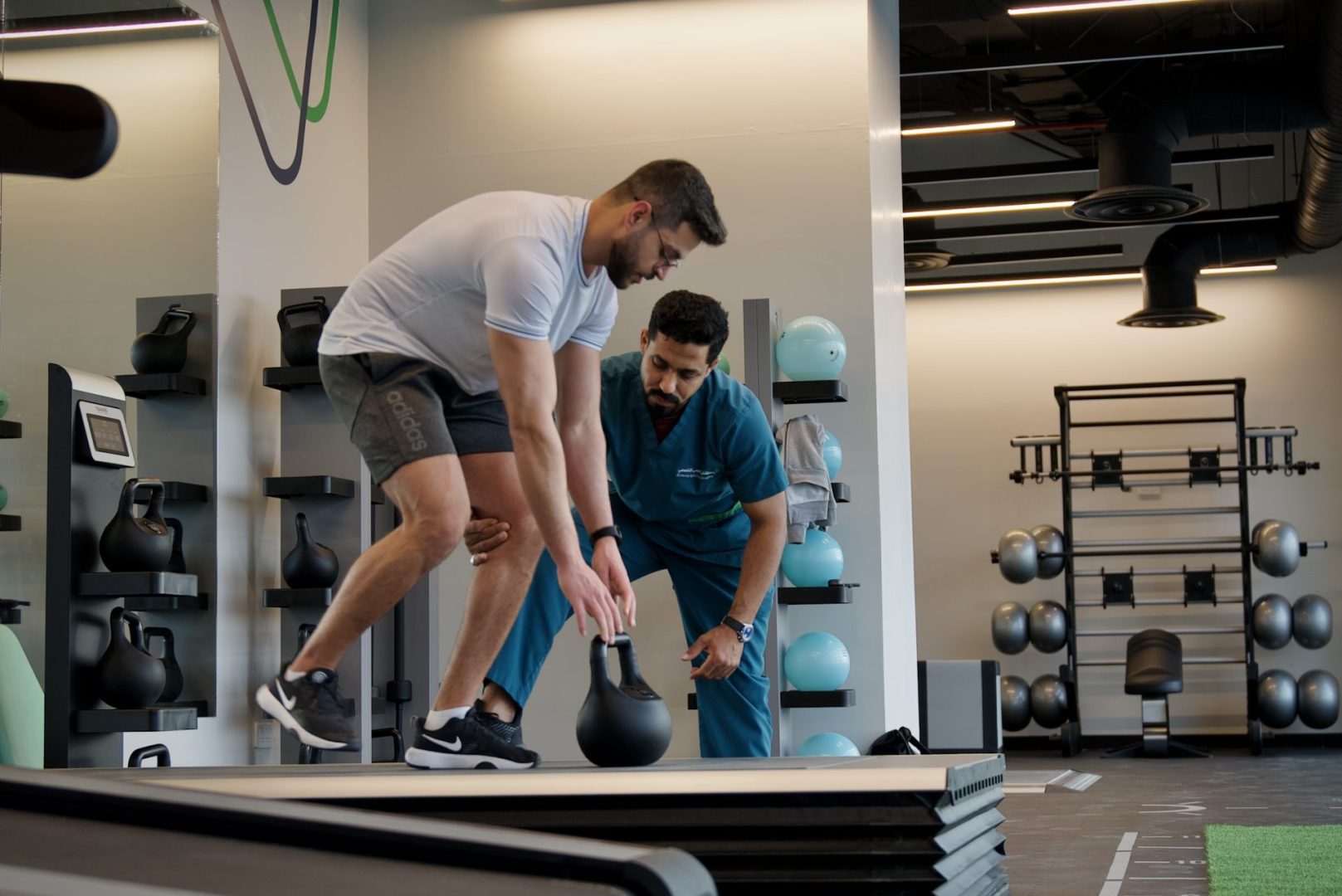
Parkinson’s Disease
Parkinson’s Disease Rehabilitation Program:
Almoosa rehabilitation hospital offers specialized services to help a person with Parkinson’s disease function as independently as possible:
• Physiotherapy:
Our therapist works with the patients to improve mobility , strength, coordination, balance, endurance, and the ability to perform activities of daily living.
• Occupational therapy:
It helps the patients to return to their daily activities, such as working, grocery shopping, cooking, cleaning, and caring for a family member.
• Speech and language therapy:
Parkinson’s disease can affect many different aspects of communication, including the ability to remember certain words and the way the voice sounds
Our speech–language pathologist will help persons with Parkinson’s disease on maintaining and improving as much of their communication and swallowing abilities as possible.

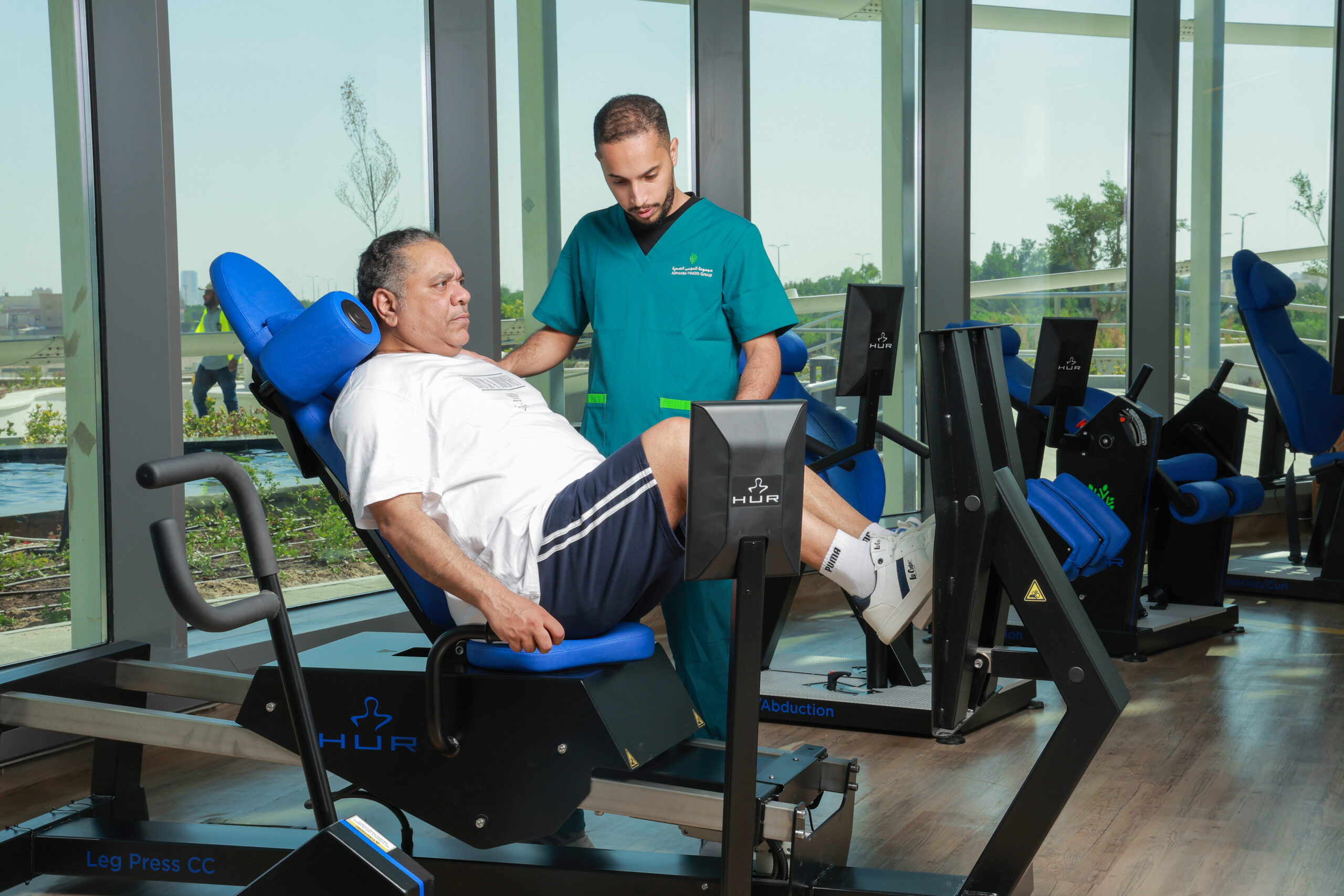
Arthritis
Swelling and tenderness of one or more joints. The main symptoms of arthritis are joint pain and stiffness, which typically worsen with age. The most common types of arthritis are osteoarthritis and rheumatoid arthritis.
Treatments vary depending on the type of arthritis. The main goals of arthritis treatments are to reduce symptoms and improve quality of life.
Therapy:
Physical therapy can be helpful for some types of arthritis. Our team of PT experts will give you Exercises that can improve range of motion and strengthen the muscles surrounding joints. In some cases, splints or braces may be warranted.
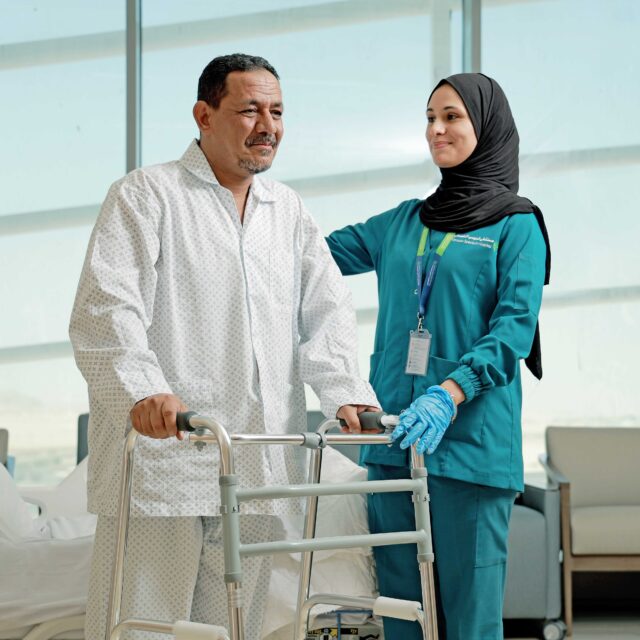
Cancer Rehabilitation
Cancer Rehabilitation helps patients maintain and restore their physical and mental health before, during and after cancer treatment. A team of professionals works together to develop a plan that is based on your preferences, strengths, and objectives.
They can assist you in the following ways:
• Enhance your endurance, strength, and mobility
• Improve your self-esteem and confidence
• Provide easier access to daily living activities and self-care
• Assist you in coping with anxiety, distress, or other emotional problems
• Reducing fatigue, pain, and other lingering symptoms
• Formulate a long-term cancer survivorship plan

Cardiac Rehabilitation
Cardiac rehabilitation (cardiac rehab) is a personalized program of education and exercise. Our supervised program is designed to improve health in patients with heart disease. It’s often recommended after a heart attack or heart surgery.
Cardiac rehabilitation involves exercise training, emotional support and education about a heart-healthy lifestyle. Healthy lifestyle habits include eating a nutritious diet, managing weight and quitting smoking.
Cardiac rehab includes medical check up , exercises like low impact activities , life style education and support

Concussion Rehabilitation
We offer comprehensive brain injury and condition care through our concussion rehabilitation program.
Our team of experts treats brain injuries of all severity levels, from the most severe to the least severe. For a better outcome after a concussion, our specialists will help recognize and evaluate the symptoms.
In most cases, concussion rehabilitation begins 48 hours after injury. The first 48 hours should include rest, hydration, nutrition, and light exercise – the latter being a novel practice based on recent consensus statements. Following symptoms resolution, concussion rehabilitation introduces the next stages. Stages include progressively introducing endurance, stimuli (visual, auditory, cognitive, psychological) and real-life elements.

Locked-in syndrome
Locked-in syndrome is caused by damage to a specific part of the brain stem known as the pons. The pons is a region in the brain stem containing nerve fibers that connect the medulla oblongata to the cerebellum. In individuals with locked-in syndrome, damage to the pons blocks nerve function and causes paralysis.
People with locked-in syndrome usually need therapy and training to communicate with others. Their therapy mainly focuses on improving motor functionality and enhancing physical functions like speech.
Other modes of treatment include chest physiotherapy, breathing exercises, and regularly changing the individual’s position to enable proper cardiovascular and respiratory function.
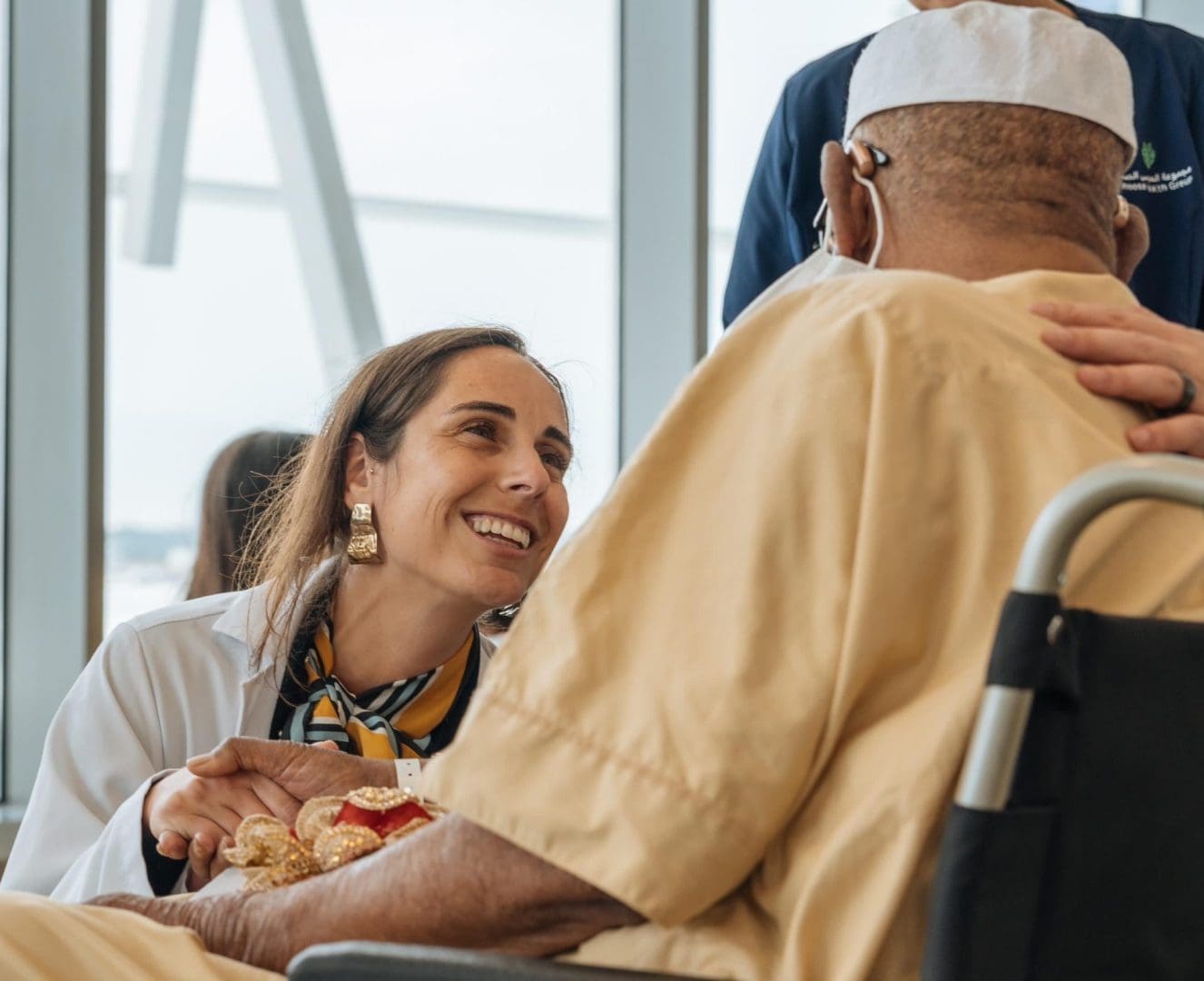
Vestibular Rehabilitation program
Our physical therapists will evaluate your balance, how you walk, your arm and leg strength and flexibility, and then they will tailor vestibular rehabilitation therapy to your specific need.
The therapy helps:
- Reduce your risk of falling.
- Improve your balance.
- Reduce your dizziness symptoms.
- Improve your ability to stabilize your vision.
Increase your body strength.

Almoosa Rehabilitation Hospital is leading the way in innovative healthcare solutions. These advancements aim to not only expedite the recovery process but also sustain the journey towards independence for our patients. Through these cutting edge technologies and advance robotic, we are embracing a future where independence is not a distant but a near reality.
Lokomat
One of the most popular devices for rehabilitation and walking training is the Lokomat. It features a body weight support system that allows joints to move comfortably.
The Lokomat is suitable for:
- patients with partial or complete loss of walking function.
- Patients with Spinal cord injuries
- Traumatic brain injuries
- Multiple Sclerosis
- Cerebral Palsy
Advantages of Lokomat
- provides gait training that is similar to normal activity, which reduces rehabilitation time.
- The device provides long and intensive training sessions, which promotes faster recovery.
- The Lokomat can be adjusted to suit a patient’s needs and provides visual performance feedback to motivate the patient.

Andago
is an above-ground robotic walking training device. The device facilitates walking on the ground and training in balance, comes with a dynamic and individually adjustable body weight support system, and provides fall protection for secure training. Andago® can be configured to allow patients to walk freely without restrictions.
It is suitable for:
- spinal cord injuries patients
- multiple sclerosis patients
- Parkinson’s patients
- patients who have undergone lower extremities surgery.

C-Mill
The C-Mill provides a safe and comfortable training environment that simulates situations and challenges of daily life through augmented reality technology. It helps restore balance, steady walking, and adapt to walking quickly and effectively.

The OMEGO
a leading robotic device used to treat patients with weakness or insufficiency in their lower extremities. It features a multifunctional design suitable for all stages of rehabilitation and improvement of Gait functions. It provides early rehabilitation and is characterized by ease of preparation and adaptation to the patient’s therapeutic needs, which increases the speed and effectiveness of treatment. The device includes motivational training using gamification and provides accurate reports and assessments on patient progress. It is suitable for neurological, orthopedic, geriatric, and pediatric rehabilitation patients.

AMADEO
an interactive rehabilitation device for patients with hand and wrist problems. The device stimulates nerves and develops motor, sensory, and cognitive skills of the fingers and hands to improve the flexibility of the hand and fingers. The AMADEO device relies on artificial intelligence technology to analyze patient data and determine treatment programs according to a patient’s needs. It allows doctors and therapists to follow a patient’s progress and prepare a customized treatment plan using the TYROS software, which accesses and analyzes patient data accurately and effectively. This robotic device provides the ability to control motion, force, and record repetitions to improve treatment outcomes.

PABLO
A technology used to treat children and adults with stroke, cerebral palsy, multiple sclerosis, or paraplegia is the PABLO system. It offers a variety of neurorehabilitation options for the upper and lower extremities. The system features guided neurorehabilitation and integrated sensory devices that enable patients to train and improve daily cognitive and motor abilities on a large interactive screen. Many electronic games are used to boost rehabilitation, which reduces time and effort in adjusting and improving the basic functions of the arms.

MYRO
a technology used to enhance and intensify the motor and cognitive therapy of the upper limbs for patients who suffer from deficits in motor function, poor attention, focus, visual perception, and spatial awareness. The device has many interactive applications that can be controlled by touching, pressing, or dragging. Patients can also use real tools that enhance gripping functions in their hands. This device helps in the rehabilitation and training of gross and fine motor skills, motor and visual synergy, and motor coordination. The MYRO device is highly flexible and can be adapted to suit the conditions of all patients.

TYMO
The TYMO device is a versatile computer-assisted rehabilitation measurement and therapeutic device used for neurological and orthopedic patients of all ages with balance problems, often resulting from a stroke. With its slim design and wireless computer connectivity, the TYMO system can be conveniently used in hospital wards, outpatient departments, and at home. TYMO provides comprehensive assessments of patients’ motor coordination and balance, which facilitates the preparation of customized rehabilitative programs based on the patient’s condition. It provides a wide range of interactive applications that help rehabilitate and train the motor deficit of the upper and lower limbs and the whole trunk, contributing to motivating the patient to continue.

Erigo
The Erigo device is a rehabilitation device used to treat patients who suffer from paraplegia or motor deficits due to Parkinson’s disease, stroke, and long hospitalization periods. The particular design of this device encourages active movement of the patient’s legs, spine, and feet, resulting in improved blood flow and stimulation of the nervous system. The Erigo device is unique in that it allows patients to move and stand upright. The device is also adjustable to meet individual patients’ needs, and it features sensors and precise controls to provide sufficient body support and allow safe and effective limb movement. Recent studies indicate significant improvements in patient conditions following treatment sessions using the Erigo device.

Hyperbaric oxygen therapy
Hyperbaric oxygen therapy is a modern technique used to treat damaged body tissues. It involves breathing 100% pure oxygen in a hyperbaric environment. This therapy is used to treat clogged capillaries, nourish surrounding tissues, and stimulate new tissue growth in affected areas of the body, enhancing the wound healing process and reducing inflammation. Oxygen therapy also reduces the rate of organ loss due to gangrene, making it an effective treatment for diabetic foot ulcers.
Diseases treated by the hyperbaric oxygen unit:
Hyperbaric oxygen treatment is effective in treating various medical conditions such as:
- Severe anemia
- Brain abscess
- Arterial gas embolism
- Burns
- Carbon monoxide poisoning
- Crush injuries
- Sudden deafness
- Decompression sickness
- Skin or bone infection that leads to tissue death
- non-healing wounds, such as diabetic foot ulcers
- Radiation injuries
- Skin grafts or skin flaps at risk of tissue death
- Traumatic brain injuries
- Sudden and painless vision loss
Hydrotherapy Unit
Rehabilitation sessions in the hydrotherapy unit are highly recommended and effective in restoring motor functions. The warm therapeutic pool promotes muscle relaxation and increased blood flow, allowing for better stretch tolerance and flexibility during exercises.
Using hydrotherapy as part of a physical therapy plan offers many benefits, including:
- pain relief
- faster recovery after surgery,
- increased stamina
- improved walking technique
- increased aerobic fitness levels
- improved balance and motor coordination
- increased strength of weak muscles
- increased range of motion of the joints
- improved independence and motor function
- improved blood circulation.

At Almoosa Rehabilitation Hospital, we prioritize not only exceptional medical care but also the comfort and well-being of our patients and visitors. Our extensive amenities are designed to create a supportive and inviting environment for everyone. Here’s what you can find throughout our facility:
Prayer Rooms
Designed for tranquility and reflection, our prayer rooms for both males and females are conveniently located on the first floor

Mistca Restaurant
The Mistca Restaurant, situated in the lobby, offers a diverse menu that focuses on healthy and delicious meals. With a warm ambiance and a variety of culinary options, patients and visitors can enjoy nutritious dining experiences that cater to different dietary needs, all within a relaxing setting.

Ocean Café
Adjacent to the Mistca Restaurant, the Ocean Café serves as a perfect spot to unwind. This cozy lobby café offers a selection of beverages, light snacks, and pastries, making it an ideal place for informal meetings or a quiet moment of relaxation with a book in hand.

Supermarket
Our onsite supermarket located in the lobby provides convenient access to a wide range of everyday necessities and health-oriented products. From groceries to personal care items, everything you need is just a short walk away, ensuring that patients and families have easy access to essential items during their stay

Garden Access
On the first floor, we offer access to a beautifully landscaped garden, providing a refreshing oasis for relaxation and reflection. Patients and visitors can take leisurely strolls, enjoy the fresh air, or simply unwind in a serene natural environment.
Gallery
Auditorium
Located on the 15th floor, our state-of-the-art auditorium is designed for presentations, workshops, and special events. This versatile space provides an engaging environment for educational sessions, community gatherings, and more, fostering a sense of connection and shared knowledge.

Art Workshops
Located on levels 11 and 12, our art workshops offer creative outlets for patients and visitors alike. Guided by experienced instructors, these workshops encourage self-expression through various art mediums, providing therapeutic benefits and a wonderful way to engage in the healing process.
At Almoosa Rehabilitation Hospital, we strive to create a holistic healing environment that promotes physical, emotional, and spiritual well-being. Our range of amenities is designed to support patients and their families throughout their rehabilitation journey, ensuring a comfortable and enriching experience.
Gallery
Awards and Accreditations
Inpatient Rooms
Our inpatient rooms are designed with the comfort and needs of our patients in mind, ensuring an optimal healing experience

Regular Rooms
These rooms are equipped with adjustable medical beds that allow patients to change their position as needed for maximum comfort. Each room features modern technology, enabling easy control of lighting, air conditioning, and curtains. Designed for complete privacy, the rooms are supported by a dedicated care team available 24/7 to address any patient needs. The soothing decor and personalized meal options further enhance the patient experience, while the scenic views promote a calm and relaxing atmosphere.
Suites
Regular Rooms These rooms are equipped with adjustable medical beds that allow patients to change their position as needed for maximum comfort. Each room features modern technology, enabling easy control of lighting, air conditioning, and curtains. Designed for complete privacy, the rooms are supported by a dedicated care team available 24/7 to address any patient needs. The soothing decor and personalized meal options further enhance the patient experience, while the scenic views promote a calm and relaxing atmosphere.
Our First-Class suites combine comfort and elegance, providing a peaceful and welcoming space for patients and their companions. Each suite spans over 80 square meters, offering a pleasant hospital stay.
Our suites include a family seating area for comfort and privacy and a dedicated room for companions, fostering a supportive environment throughout treatment. Guests can also enjoy stunning views of the Al-Ahsa Oasis, adding to the serene experience.
Our Second-Class suites offer a luxurious blend of comfort and exceptional service, covering 200 square meters for a truly relaxing stay. Each suite has a private room designed to ensure maximum comfort and privacy, along with a spacious lounge area that includes dining space for both patients and their companions.
Additionally, there is a private room for the companion, promoting a sense of comfort and privacy. Guests can also relax on the patio or in the outdoor seating area, which provides beautiful views of the Al-Ahsa palm trees, creating a peaceful retreat during their stay.
Suites Gallery
















































